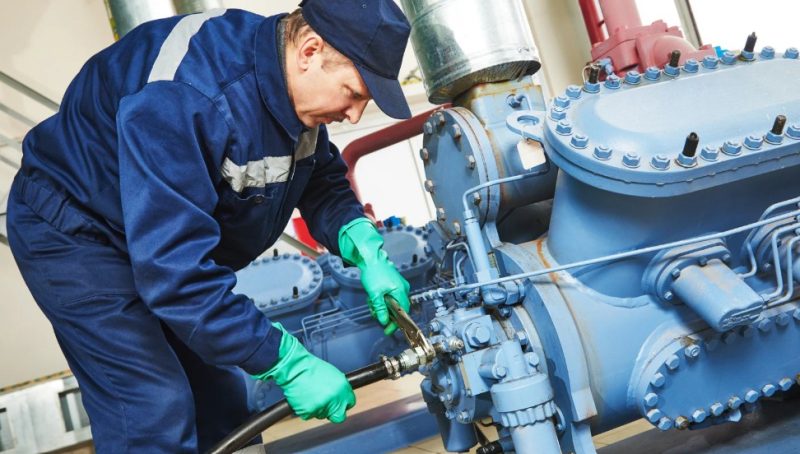For many businesses, chiller units are an essential part of day-to-day operations. From manufacturing plants and warehouses to office buildings and healthcare facilities, the cooling process plays a key role in keeping things running smoothly.
But while the initial investment in a chiller system often gets plenty of attention, the ongoing cost of ownership can be overlooked especially when it comes to maintenance.
Waiting until a unit breaks down to call in help might seem like a way to save money, but in reality, reactive maintenance is often far more expensive. A planned maintenance schedule helps businesses reduce costs, avoid downtime, and extend the working life of their systems.
Whether you’re using air-cooled, water-cooled, glycol, or other types of chillers, there are clear financial advantages to staying ahead of potential issues.
What Are the Financial Benefits of a Pre-Planned Chiller Unit Maintenance Schedule for Businesses?
Avoiding Unexpected Breakdowns and Emergency Callouts

One of the biggest cost factors for businesses using chillers is unplanned downtime. If a system fails without warning, the immediate impact can be severe production may need to stop, stock might be at risk, or facilities could become unsafe or uncomfortable. You will have to wait for a 24/7 emergency chiller unit repair before your operations can continue.
By putting a pre-planned schedule in place, you reduce the chance of these breakdowns happening in the first place. Engineers can spot worn parts or leaks during routine checks and fix them before they develop into major faults. This keeps repair costs predictable and gives businesses a better chance of managing their cooling systems without disruption.
Long-term Savings From Improved Energy Efficiency
Chiller units can use a significant amount of electricity, especially in large commercial or industrial settings. Over time, even small inefficiencies can make a big difference to your bills. A dirty heat exchanger, poor refrigerant flow, or faulty controls can all push a system to work harder than it needs to. If left unchecked, these problems slowly drive up energy costs.
Regular maintenance helps to keep everything running efficiently. Technicians can clean coils, test system performance, and check the operation of pumps, fans, and compressors. With the right care, your chiller doesn’t have to fight against preventable issues—saving you money month after month on energy bills.
Protecting Your Investment by Extending Equipment Lifespan

Chiller units are a major investment. Depending on the size and type of system, they can cost thousands of pounds to purchase and install. Replacing one too soon due to wear and tear that could have been prevented is a costly outcome for any business.
A maintenance schedule helps to get the full working life out of your equipment. Just like a car runs better with regular servicing, a well-maintained chiller system will last longer and perform better throughout its lifespan.
This means your capital investment stretches further, and you won’t be forced into an early upgrade or replacement due to avoidable damage.
Better Planning and Budgeting for Repairs
When you rely on a run-to-fail approach, it’s hard to predict what might go wrong or how much it will cost to fix. This uncertainty makes budgeting difficult, especially if a large fault suddenly appears. With a planned maintenance routine, businesses can spread the cost of upkeep more evenly across the year.
Many service providers offer planned maintenance packages where routine visits and minor parts are included in a fixed fee. This removes guesswork and allows you to build cooling system costs into your overall operations budget. Over time, this approach offers more stability and fewer surprises.
Meeting Compliance and Insurance Requirements
In some industries, there are specific standards or legal obligations that require cooling equipment to be inspected and maintained at regular intervals. This is particularly common in food production, pharmaceuticals, and healthcare. Even in settings without strict regulations, insurers may ask to see evidence that your industrial cooling systems are properly maintained before they pay out for a breakdown or damage caused by a cooling failure.
A scheduled plan makes it easier to stay on top of these responsibilities. Service reports and maintenance records give you a clear audit trail, showing that your business takes its duty of care seriously. This can also work in your favour when negotiating insurance premiums or renewing commercial cover.
Improved Performance During Peak Periods

If your business has seasonal demand or regular peaks in activity such as summer months, product launches, or holiday periods then you’ll know how important it is for cooling systems to be ready. The worst time for a chiller to develop a fault is when you need it the most.
Pre-planned maintenance allows you to time inspections ahead of these high-demand periods. Engineers can double-check system performance, top up refrigerant levels, and flag anything that might be about to go wrong. This gives you confidence that your cooling will hold up when it’s most needed, avoiding last-minute panic or loss of productivity.
Supporting Better Workplace Conditions
Although the main focus of chiller systems is often the protection of stock or production equipment, it’s worth remembering that cooling also impacts employees. Comfortable working conditions have been shown to improve morale, reduce fatigue, and help with staff retention.
By keeping chillers well-maintained and reliable, you help to provide a more stable environment for your team. This may not always have an immediate cost benefit on paper, but over time, it can contribute to higher productivity and fewer HR-related issues.
Tailoring Your Maintenance to the Type of Chiller
Not all chiller units work in the same way. Air-cooled chillers, for example, are typically easier to access and maintain, but they’re more exposed to outdoor conditions. Water-cooled systems may require more technical checks on pipework, valves, and cooling towers. Glycol chillers and HVAC integrated systems have their own servicing needs too.
A good chiller unit servicing schedule should be built around the specific type of equipment you use, how heavily it runs, and the environment it operates in. That way, you’re not just ticking boxes—you’re actually getting value from each visit.
The Bigger Picture for Business Operations
While maintenance may seem like a technical task best left to engineers, it plays a much larger role in business success.
Planned upkeep helps to lower operating costs, protect your assets, and reduce the chances of a small fault turning into a major headache. It’s not just about keeping things cold it’s about keeping your business cool, calm, and in control.
For companies relying on any form of chiller system, whether standalone or as part of a larger HVAC setup, a scheduled maintenance plan is more than just good practice. It’s a smart financial decision that pays off in reliability, performance, and peace of mind.







